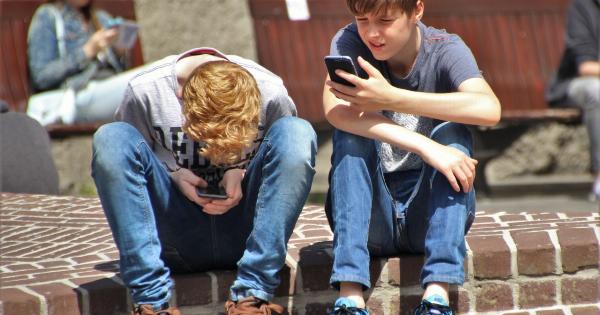Scoliosis is a condition that affects the curvature of the spine. It usually develops during childhood or adolescence but can also occur in adulthood. Scoliosis can range from mild to severe and can cause discomfort or pain in some people.
In this article, we’ll delve deeper into Scoliosis, how it develops, symptoms, treatment, and prevention techniques to help you understand more about this common condition.
What is Scoliosis?
Scoliosis is a medical condition that causes an abnormal curvature of the spine. The spine is usually straight, but in people with scoliosis, the spine curves sideways, either to the left or the right.
This condition can also cause the rotation of the spine, leading to rib asymmetry, hip, and shoulder imbalances.
How Does Scoliosis Develop?
The causes of scoliosis are not fully understood, and some cases have no clear cause. In some people, scoliosis can develop due to genetic factors. However, in many cases, there is no identifiable cause.
Scoliosis usually develops during childhood or adolescence when the skeleton is still growing. The condition’s onset is gradual and may go unnoticed in some people. In severe cases, scoliosis may require surgical intervention.
People with scoliosis have a range of treatment options, which can include physiotherapy, posture exercises, and wearing a back brace.
Symptoms of Scoliosis
The most common symptom of scoliosis is a visible curvature of the spine. The curvature may appear as an S or C shape when viewed from the back.
Scoliosis can also cause the shoulders and hips to be uneven or twisted, resulting in clothes not fitting correctly. Additionally, scoliosis can cause pain or discomfort in some people, particularly in the neck, back, or hips.
Types of Scoliosis
There are various types of scoliosis, the most common of which include:.
Idiopathic Scoliosis
The cause of idiopathic scoliosis, which accounts for about 80% of all scoliosis cases, is unknown, and there is no known cure. However, early identification and treatment can improve long-term outcomes.
Neuromuscular Scoliosis
Neuromuscular scoliosis occurs in people with neuromuscular disorders, such as cerebral palsy, muscular dystrophy, and spinal muscular atrophy. It typically progresses more rapidly than idiopathic scoliosis and may require surgery.
Congenital Scoliosis
Congenital scoliosis is a rare type of scoliosis that is present at birth. It can occur when the spine does not develop correctly in the womb. Congenital scoliosis can cause severe spinal deformities and may require surgery to correct.
Degenerative Scoliosis
Degenerative scoliosis occurs when the spine’s natural aging process causes the spine to curve. It is commonly found in people over the age of 50 and can cause back pain and other symptoms.
Treatment options for degenerative scoliosis include physiotherapy, pain medication, and surgery.
Diagnosis of Scoliosis
Scoliosis can be diagnosed by a physical examination, medical history, and imaging tests. During a physical examination, a doctor will ask the patient to stand and bend over to check for any signs of curvature.
They may also check for any rib or shoulder asymmetry. If the doctor suspects scoliosis, they will order imaging tests such as an X-ray, MRI, or CT scan to confirm the diagnosis and determine the extent of the curvature.
Treatments for Scoliosis
The treatment for scoliosis depends on the severity of the curvature of the spine and the individual’s age. Mild cases of scoliosis may not require any treatment, while severe cases may require surgery.
Other treatment options for scoliosis include:.
Back Brace
A back brace is often recommended for children with a curvature of 25-40°. The brace helps to support the spine and prevent the curvature from worsening. It can be worn under clothing and must be worn for up to 23 hours a day.
Physiotherapy and Posture Exercises
Physiotherapy and posture exercises can help improve muscle strength, flexibility and reduce pain caused by scoliosis. A physiotherapist will develop an exercise plan that is tailored to the individual’s needs.
Surgery
Surgery for scoliosis is usually recommended in severe cases where the curvature of the spine is significant and has the potential to cause health problems.
During surgery, a surgeon will realign the spine, straighten it as much as possible, and install metal rods or screws to hold the spine in place.
Preventing Scoliosis
There is no known way to prevent scoliosis. However, early detection and timely intervention can improve the long-term outcome. Regular visits to the doctor for check-ups can help detect any signs of scoliosis early on.
Additionally, exercising regularly, maintaining a healthy weight, practicing good posture, and avoiding heavy lifting can help keep the spine healthy.
Conclusion
Scoliosis is a medical condition that affects the spine’s curvature, causing the sideways bending of the spine. It can cause pain and discomfort and may require different forms of treatment, depending on the severity.
Early detection and timely intervention can improve the long-term outcome. Regular visits to the doctor for check-ups and living a healthy lifestyle can help prevent scoliosis from developing.































